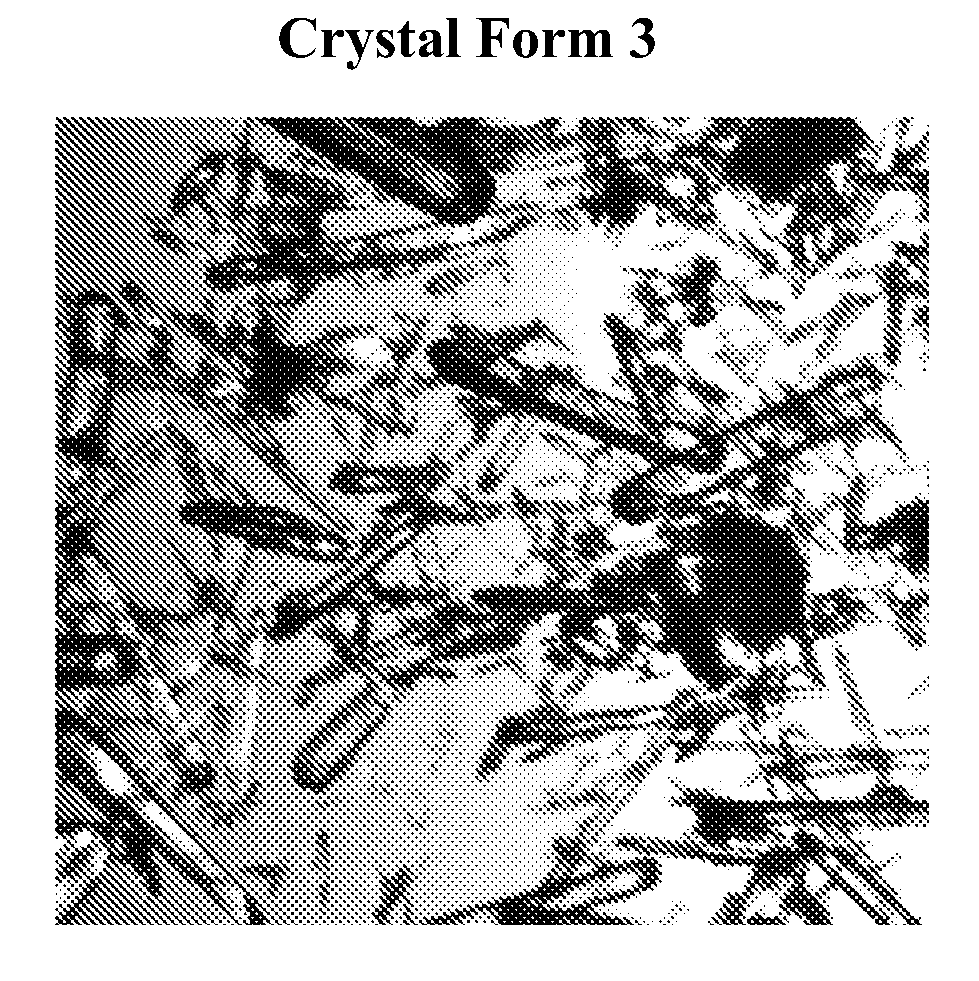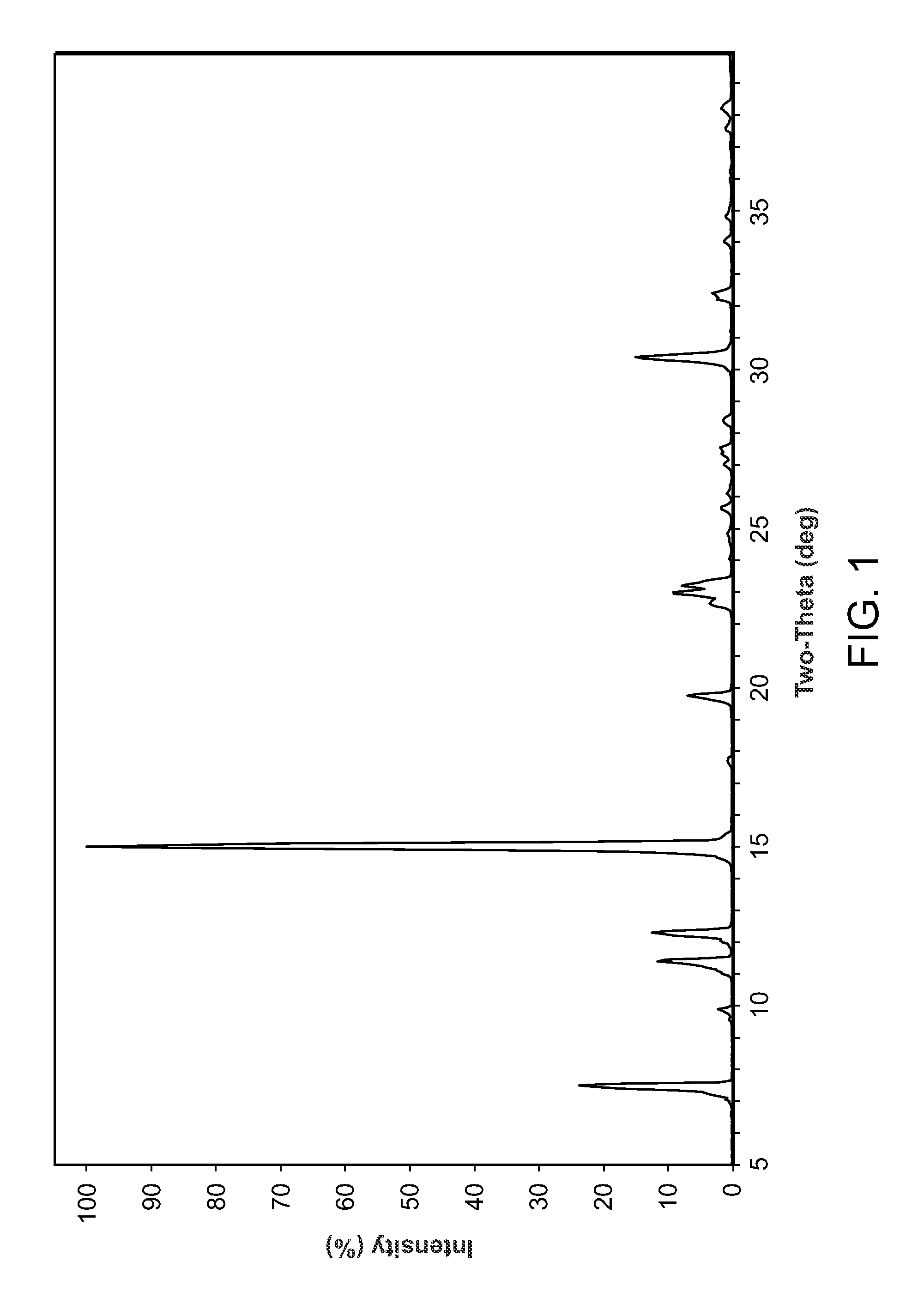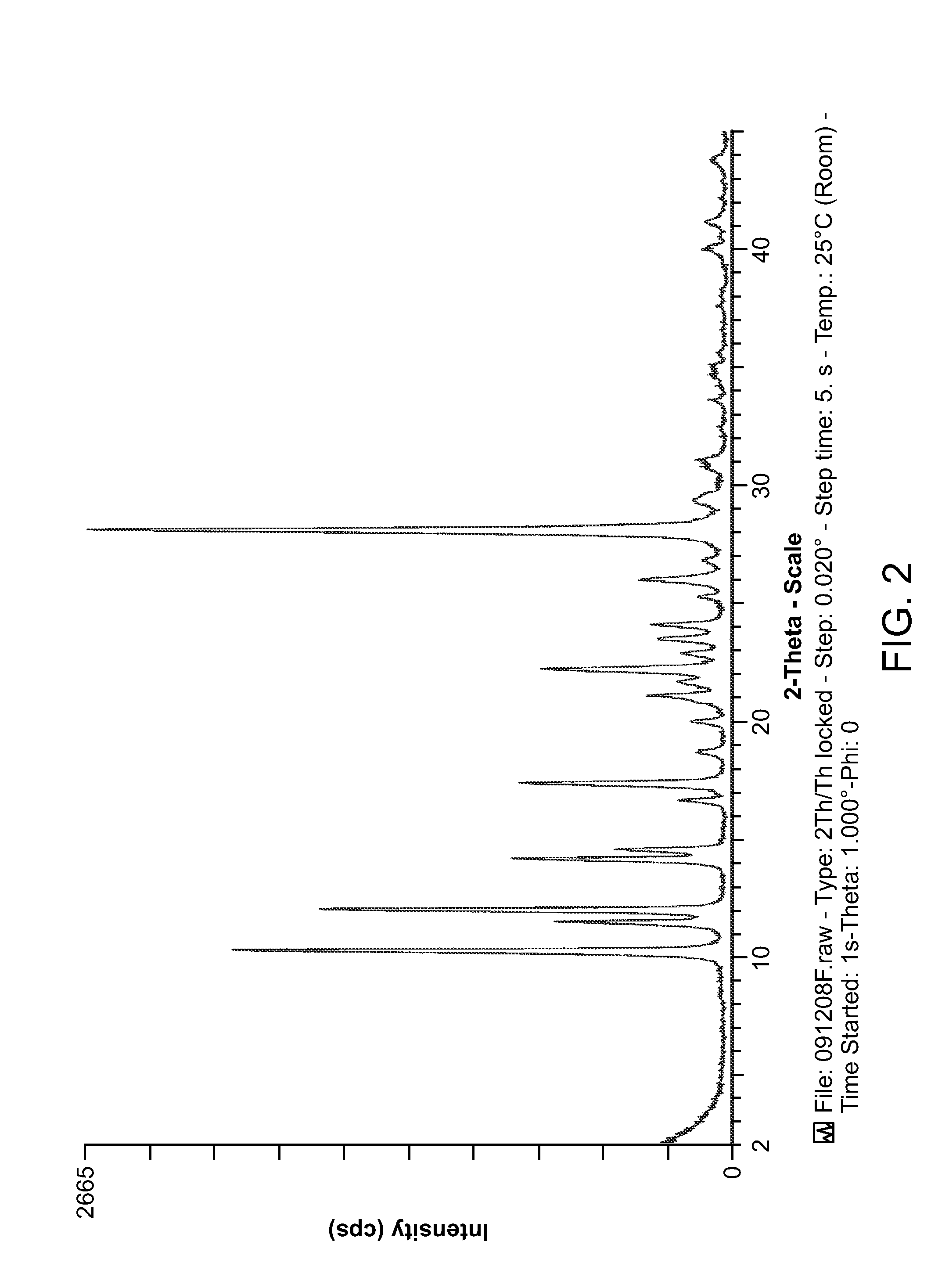Novel compounds and compositions for targeting cancer stem cells
a technology of naphthofuran and compound, applied in the field of naphthofuran compounds, can solve the problems of affecting the growth and survival of cancerous cells, affecting the quality of life of patients, so as to reduce the mass of test animals and reduce the volume of neoplastic cells
- Summary
- Abstract
- Description
- Claims
- Application Information
AI Technical Summary
Benefits of technology
Problems solved by technology
Method used
Image
Examples
example 1
Preparation of a Naphthofuran Compound
[0221]The procedure for preparation of a naphthofuran compound (2-acetylnaphtho[2,3-b]furan-4,9-dione) is summarized as follows:
Step 1: Bromination
[0222]To a 2 liter 3 neck round bottom flask equipped with a mechanical stirrer, thermometer, and addition funnel is charged 3-butene-2-one (451.2 grams). To the addition funnel is added bromine (936.0 grams). After the content in the flask is cooled to −5° C., the bromine is dropped into the flask with vigorous stirring and maintaining temperature at −5° C. over 30 minutes. The mixture is stirred for an additional 15 minutes at −5° C., and then is split into 4 equal portions.
Step 2 Debromination
[0223]Each portion of the mixture along with tetrahydrofuran (2133.6 grams) is loaded into a 22 liter 4 neck round bottom flask equipped with a mechanical stirrer, thermometer, and addition funnel. To the addition funnel is charged DBU (1,3-Diazabicyclo[5.4.0]undec-7-ene, 222.9 grams). The DBU is dropped into ...
example 2
Preparation of a Naphthofuran Compound
[0229]Another procedure for the preparation of a naphthofuran compound (2-acetylnaphtho[2,3-b]furan-4,9-dione) is summarized as follows:
Step 1: Bromination
[0230]A 12 L RBF (Round Bottom Flask)(protected from light with UV filters) was charged with MVK (2,160 ml, 26.4 mol) and cooled to −9.6° C. in a dry-ice / acetone bath. Bromine (1,300 ml, 25.3 mol) was added slowly, over 2 hrs and 20 min, maintaining T=max). The resulting yellow mixture was stirred for additional 28 min.
Step 2: De-Hydrobromination
[0231]A 72 L RBF with pre-cooled THF (Tetrahydrofuran) (20 L, 5 ml / g HNQ (2-Hydroxy-1,4-naphtoquinone)) was charged with brominated product from the above and the resulting solution was cooled to −4.8° C. DBU (4,200 ml, 28.1 mol) dissolved in THF (4,200 ml) was added slowly, over 2 hrs and 20 min, maintaining Tmax). The resulting suspension was stirred for 42 min.
Step 3: Coupling
[0232]2-Hydroxy-1,4-naphthofuran (4,003 g, 23.0 mol) was charged, in one p...
example 3
Micronization of Naphthofuran Compound
[0248]For example, Compound 1 crystals were milled and passed through a 160 micron (μm) sieve (Sieve #100, 150 μm opening) to generate the crystals of approximately 160 microns or less.
[0249]For example, Compound 1 crystals were milled (The Retsch Ultra centrifugal Mill ZM 200; Single pass, at 18,000 rpm using 0.25 mm screen) to a median particle size of about 20 micron. Table 3 presents the resultant distribution of particle sizes (Malvern 2000 with the Hydro 2000S wet accessory). The columns present the maximum size of particles in the cumulative percent total presented in the subscript at the header of the column. For example, the column D90 presents the size for which 90% of the particles have an equal or lesser size. The column D50 represents the median size—half of the particles have a greater size, and half of the particles have an equal or lesser size.
TABLE 3Particle Size Distribution of Milled Compound 1.Particle Size (microns)D90D50D10...
PUM
| Property | Measurement | Unit |
|---|---|---|
| 2θ | aaaaa | aaaaa |
| 2θ | aaaaa | aaaaa |
| 2θ | aaaaa | aaaaa |
Abstract
Description
Claims
Application Information
 Login to View More
Login to View More - R&D
- Intellectual Property
- Life Sciences
- Materials
- Tech Scout
- Unparalleled Data Quality
- Higher Quality Content
- 60% Fewer Hallucinations
Browse by: Latest US Patents, China's latest patents, Technical Efficacy Thesaurus, Application Domain, Technology Topic, Popular Technical Reports.
© 2025 PatSnap. All rights reserved.Legal|Privacy policy|Modern Slavery Act Transparency Statement|Sitemap|About US| Contact US: help@patsnap.com



